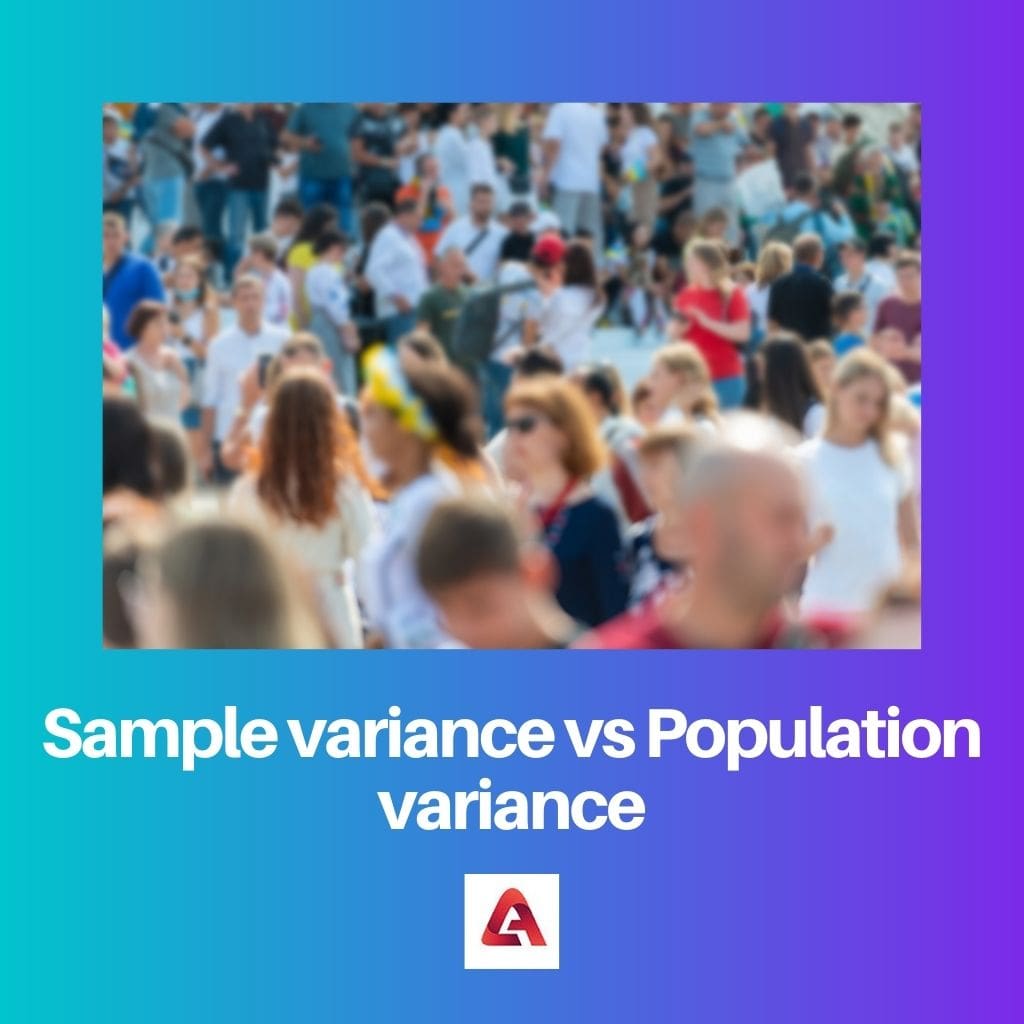Understanding different metrics in the population is an essential part of every research group. For this reason, researchers use sample variance and population variance to analyze various metrics of the data set.
Even though, on the surface, both of these processes use algebraic computational formulas, they work on different principles. For this reason, many people get confused with these processes and interchange one with another.
Key Takeaways
- Sample variance is a measure of dispersion calculated from a subset or sample of a larger population, estimating the population variance based on available data.
- Population variance is a measure of dispersion calculated using the entire population, accurately representing the variability within the data set.
- The main distinction between sample variance and population variance is the data used for calculation; sample variance is based on a subset of the population, while population variance uses the entire population.
Sample Variance vs Population Variance
Population variance is a measure of the variance in a population, which is the entire group of individuals the researcher focused on. Sample variance, is a measure of the variance in a sample that is a subset of the population. It is gotten by the mean of the squared difference from the sample mean.

Comparison Table
| Parameter of Comparison | Sample Variance | Population Variance |
|---|---|---|
| What is it | It is an estimating process by which metrics of any specific sample data can be analyzed & measured through a systematic approach. | It is an estimating process by which metrics of any population can be analyzed & measured through a systematic approach. |
| requirements | Small sample data set. | Extensive population data set. |
| Used by | Various research groups. | Government agencies. |
| Benefits | It can be done quickly with a limited budget. | Give a reliable conclusion report. |
| Drawback | The reliability of the conclusion report varies from sample to sample. | It takes lots of time and investment for data gathering and analyzing processes. |
What is Sample Variance?
Sample variance is an estimating process by which metrics of any specific sample data can be analyzed & measured through a systematic approach. For the analysis process, various algebraic computational formulas are used.
Most sample variance is used to analyze small data sets. Generally, the data set used for the sample variance purposes contains information about fifty to five thousand items. The benefit of the sample variance is that it takes undersized resources to assemble data and analyse processes.
However, the biggest challenge of the sample variance is the accuracy of the prediction; the analysis report widely depends on the sample size and sample selection process. A large data set provides a more accurate sample variance prediction.
Various research groups use sample variance for their work. For example, many researchers of the medicine production company use sample variance on a small group of people to see the effectiveness of the medicine.
What is Population Variance?
Population variance is an estimating process by which metrics of any population can be analyzed & measured through a systematic approach. For the analysis process, a congregation of a large population is required.
Most Population variance is used to analyze large data sets. Generally, the data set used for population variance purposes contains information about millions of items.
However, the biggest challenge of the population variance is information gathering. It takes a significant investment in the data congregation process for population variance.
Due to huge expenses, most small research groups do not always use population variance for their research work. Instead, most government agencies use their budget for collecting data and use Population variance to analyse.
Various government agencies use population variance for analyzing census data. It helps them measure different metrics of the public.
Main Differences Between Sample Variance and Population Variance
- On the one hand, sample variance is an estimating process by which metrics of any specific sample data can be analyzed & measured through a systematic approach. On the other hand, population variance is an estimating process by which metrics of any population can be diagnosed & measured through a systematic process.
- The sample variance requires a small sample data set for analyzing processes. It may contain information about fifty to fifty thousand items.
- Most of the time, various research groups use sample variance for their research purposes. But most of the time, government agencies use population variance to analyze census data.
- The benefit of the sample variance is that it can be done quickly with a limited budget. On the other hand, population variance always gives a reliable conclusion report.
- The drawback of the sample variance is that the reliability of the conclusion report varies from sample to sample. The liability of the population variance is that it takes lots of time and investment for the data gathering and analyzing process.




